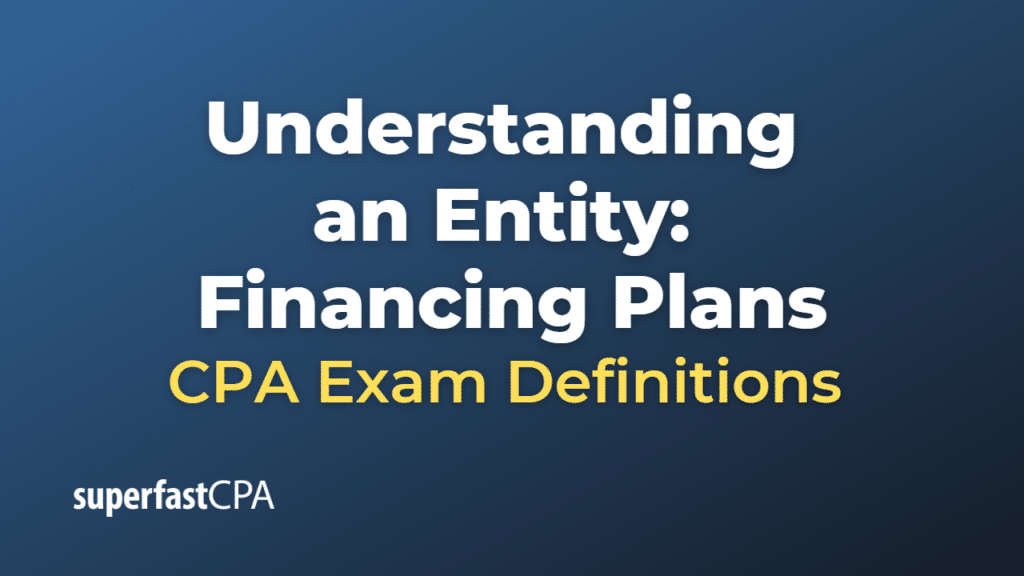Understanding an Entity: Financing Plans
An entity’s financing plans define the nature of the entity by outlining its strategy for obtaining the necessary funds to support its operations, investments, and growth objectives. Financing plans may include raising capital through debt or equity issuance, obtaining bank loans, entering into lease agreements, or utilizing other financing sources. The financing plans can impact the risk of material misstatement in an entity’s financial statements in several ways:
- Complexity of financing arrangements: Financing plans can involve complex transactions and financial instruments, such as convertible debt, derivatives, or structured financing. The increased complexity in accounting for these instruments can result in a higher risk of material misstatement due to errors, misinterpretations, or inadequate disclosures.
- Debt covenants and compliance: Financing plans involving debt often come with covenants, which are contractual agreements between the borrower and the lender, imposing certain restrictions or requirements on the borrower. Noncompliance with debt covenants can lead to penalties, renegotiation of terms, or acceleration of debt repayment, potentially increasing the risk of material misstatement in the financial statements.
- Interest rate and refinancing risks: An entity’s financing plans can expose it to interest rate risk or refinancing risk, particularly if it has a significant amount of variable-rate or short-term debt. Changes in interest rates or difficulties in refinancing debt can impact the entity’s financial performance and cash flows, potentially affecting the risk of material misstatement.
- Equity financing and dilution: Financing plans that involve equity issuance can impact the entity’s earnings per share and potentially dilute existing shareholders’ ownership interests. This may lead to increased scrutiny of financial performance and pressure on management to meet earnings expectations, potentially increasing the risk of material misstatement due to management bias or aggressive accounting practices.
- Financial leverage and solvency: An entity’s financing plans can affect its financial leverage, which is the proportion of debt to equity in its capital structure. Higher financial leverage can result in increased interest expenses, reduced financial flexibility, and increased solvency risk, potentially impacting the risk of material misstatement in the financial statements.
When assessing the inherent risk of material misstatement during the planning and execution of an audit, auditors should consider the impact of an entity’s financing plans on its operations and financial reporting. Understanding the implications of the financing plans can help auditors design appropriate audit procedures to address the risks associated with the entity’s financing activities and provide reasonable assurance that the financial statements are free from material misstatement.













